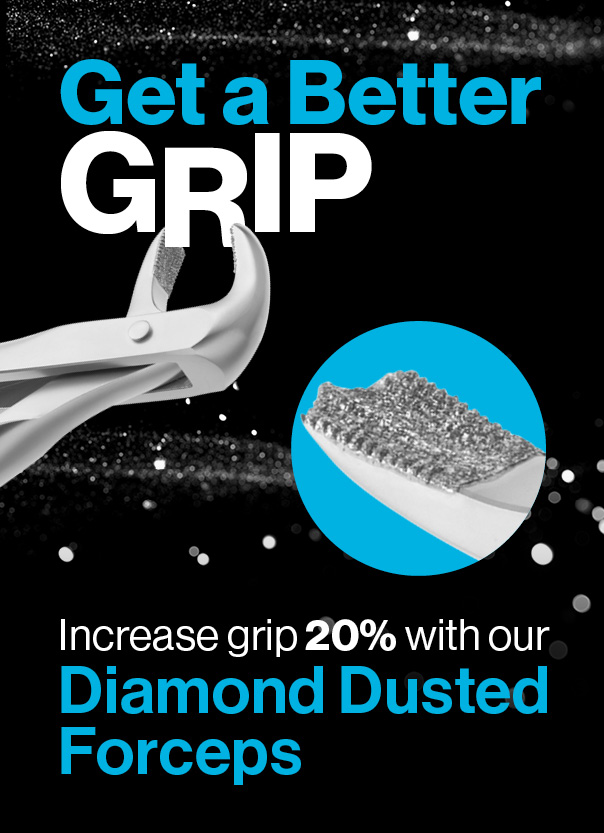Back to Practice | Aerosol Management

One of the biggest concerns moving forward in your practice is mitigating the risk of aerosols for your patients and staff. To reduce the aerosols produced during treatment, don’t overthink it. Get back to the basics to maintain a level of safety and sterilization.
Hand Scaling
One simple and easy option to help reduce aerosols is to hand scale during your hygiene appointments. The ADA, CDC, and ADHA recommend prioritizing the use of hand scalers as an alternative to ultrasonic and power methods. Many studies have shown that the same clinical outcomes are achieved with hand scaling as ultrasonics, allowing you to provide enhanced patient care while mitigating aerosol risks. Our EverEdge™ 2.0 scalers are 72% sharper than the next leading competitor and are 50% sharper after 500 strokes, making them a perfect choice for dental hygiene procedures. Get back to top performance while still providing the best care for your patients and staff.

Exclusive Perio Recovery Kits are now available to further help your practice reduce aerosol concerns.
To reduce aerosols most effectively via hand scaling, you need the sharpest working ends available. Therefore, you may need to make the investment into new hand instrumentation. For you to make the best decision for your practice, take advantage of our Scaler Usage Calculator to determine the overall cost per procedure for your practice.
Example:
50 work weeks per year x 5 works days per week = 20 work days per year x 2 uses per day = 500 uses per year
$55 scaler value ÷ 500 uses per year = $0.11 per procedure
CALCULATE SCALER USAGE PER YEAR
CALCULATE COST PER PROCEDURE

Dental Dams
Another way to reduce aerosols during treatment is with the use of dental dams and rubber dam clamps. In addition to providing protection to a patient’s oral cavity, a dental dam is used to isolate the site to enhance visibility. Studies have also shown that during many dental procedures, the use of a dental dam will eliminate virtually all contamination from saliva and blood.¹
Personal Protective Equipment
The simplest way to address concerns about aerosols is by always wearing the proper PPE. Gloves, face masks, protective eyewear, face shields, and protective clothing should always be worn to protect against exposure to infectious agents and to minimize the amount of exposed skin. That means you should wear gowns or lab jackets that cover your forearms and have cuffs at the wrist, so fluid does not penetrate the skin.


High-Volume Evacuation (HVE)
The use of a high-volume evacuation (HVE) is recommended during procedures to reduce aerosols.2,3,4,5,6 HVE has been shown to reduce the contamination arising from the operative site by more than 90 %.7 The ADHA recommends that a HVE be available in each dental hygiene room.4 Palmero HVEsolo™ is uniquely designed for clinicians performing procedures without an assistant. Single-handedly evacuate fluids, debris, and contaminated aerosols from the treatment site. The short (2.5” length), three-vent design and lightweight shaft allows for solo practitioner use of HVE in the non-dominant hand. Max Vac Plus with Color™ Combo-Tip™ Evacuators and HVE Combo-Tip™ Evacuators offer two tips in one—vented on one end and non-vented on the other for added convenience. The unique "S" tip design eliminates sharp edges, enhancing patient safety and comfort, while the stiff, firm construction allows for cheek retraction.
1 Using Aerosols in Dental Settings During COVID-19, Cothron & The American Institute of Dental Public Health, https://aidph.org/using-aerosols-in-dental-settings-during-covid-19
2 Aerosols and Splatter in Dentistry; Harrell and Molinari; JADA 135; April 2004
3 Zhang X, Hu Z, Zhu X, Li W, Chen J. Treating periodontitis-A systematic review and meta-analysis comparing ultrasonic and manual subgingival scaling at different probing pocket depths.. Research Square; 2020. DOI: 10.21203/rs.2.13066/v4.
4 ADHA Interim Guidance on Returning to Work https://www.adha.org/resources-docs/ADHA_TaskForceReport.pdf
5 CDC https://www.cdc.gov/coronavirus/2019-ncov/hcp/dental-settings.html
6 ADA Interim Guidance for Minimizing the Risk of COVID-19 Transmission https://www.ada.org/~/media/CPS/Files/COVID/ADA_COVID_Int_Guidance_Treat_Pts.pdf?utm_source=adaorg&utm_medium=covid-resources-lp&utm_content=cv-pm-ebd-interim-response&utm_campaign=covid-19
7 Aerosols and splatter in dentistry HARREL, STEPHEN K. et al. JADA Volume 135, Issue 4, 429 - 437

